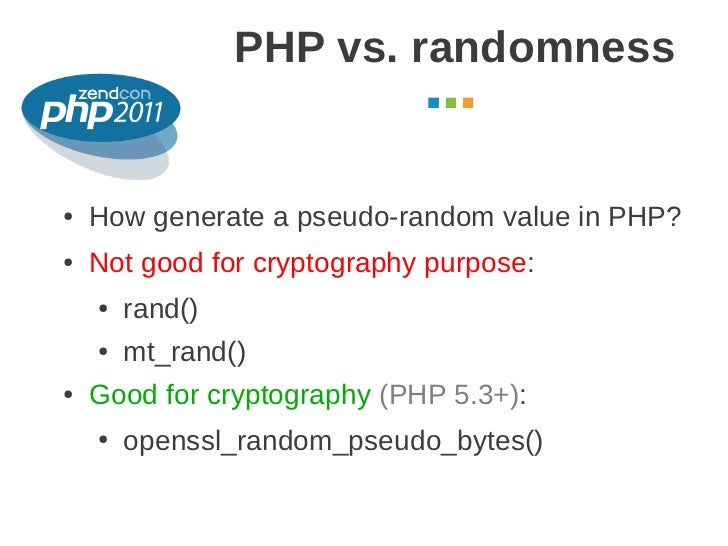Generate Symmetric Key Openssl Using Rand
There are multiple ways of generating an encryption key. Most implementations rely on a random object. All examples mentioned here use a secure cryptographic randomizer.
- Openssl Generate Rsa Private Key
- Generate Aes Key Openssl
- Generate Symmetric Key Openssl Using Rand Tutorial
PowerShell
Base64
One note on the OpenSSL base64 command: the number you enter is the number of random bytes that OpenSSL will generate,.before. base64 encoding. Base64 then then produces four bytes of output for every three bytes of input – meaning that the number on the command line should be 3/4 of the desired password length. This small tutorial will show you how to use the openssl command line to encrypt and decrypt a file using a public key. We will first generate a random key, encrypt that random key against the public key of the other person and use that random key to encrypt the actual file with using symmetric encryption. The num argument for openssl rand is interpreted as number of bytes, not number of bits. An AES-128 expects a key of 128 bit, 16 byte. To generate such a key, use OpenSSL as: openssl rand 16 myaes.key AES-256 expects a key of 256 bit, 32 byte.
Quickbooks pro 2015 key generator. Control the flow of cashThe flow of cash is very easily controlled by the latest version.
Hex
C#
The code snippets below can be run from LINQPad or by copying the following code into a new project and referencing System.Security.
Any random source that you add using -rand file:file. is used as additional seed data - in other words, the output will always be random, even if you supply the same seed. As the pseudo random generator provided by OpenSSL generally runs in the application space on the main thread, it may be faster than asking a lot of data from /dev/urandom. Instead, we can use OpenSSL itself to help us generate random symmetric keys. Really, all we want from a symmetric key is that it be the right size and that it be random, so we generate them with OpenSSL’s rand command:% openssl rand -base64 16 symmkey This will generate a 16 byte (128 bit) random value in base 64 encoding. We can use this to.
Openssl Generate Rsa Private Key
Base64
Jun 23, 2012 OpenSSL, RSA, AES and C. Jun 23, 2012. Disclaimer: I am NOT a crypto expert. Most of this function deals with the OpenSSL API and how to generate keys and initialize EVP contexts. But rather encrypt a symmetric key with RSA and then use the symmetric key to encrypt your data since there is no max length on symmetric key encryption. Any random source that you add using -rand file:file. is used as additional seed data - in other words, the output will always be random, even if you supply the same seed. As the pseudo random generator provided by OpenSSL generally runs in the application space on the main thread, it may be faster than asking a lot of data from /dev/urandom.
Hex
OpenSSL
OpenSSL is well known for its ability to generate certificates but it can also be used to generate random data.
Base64
Generates 32 random bytes (256bits) in a base64 encoded output:
Plaintext
Generates 32 random characters (256bits):
Related Articles
- Message Property Encryption
Encrypt message fragments using property encryption. - Security
Security features for messages, transports, and persisters.
A Pre-Shared Key (PSK) or also known as a shared secret is a string of characters that is used as an authentication key in cryptographic processes. A PSK is shared before being used and is held by both parties to the communication to authenticate each other, usually before other authentication methods such as usernames and passwords are applied.
It is commonly used in different types of Virtual Private Network (VPN) connections, wireless networks in a type of encryption known as WPA-PSK (Wi-Fi Protected Access Pre-Shared Key) and WPA2-PSK, and also in the EAP (Extensible Authentication Protocol Pre-Shared Key), and many others authentication mechanisms.
In this article, we will show you different ways to generate a strong Pre-Shared Key in Linux distributions.
1. Using OpenSSL Command
OpenSSL is a well-known and widely-used command-line tool used to invoke the various cryptography functions of OpenSSL’s crypto library from the shell. To generate a strong PSK use its rand sub-command which generates pseudo-random bytes and filter it through base64 encodings as shown.
2. Using GPG Command
GPG is a command-line tool to provide digital encryption and signing services using the OpenPGP standard. You can use its --gen-random option to generate a strong PSK and filter it through base64 encoding as shown.
In the following commands, 1 or 2 is the quality level and 10, 20, 40, and 70 are the character counts.
Generate PSK Key Using GPG Command
3. Using Pseudorandom Number Generators
You can also use any of the pseudorandom number generators in Linux such as /dev/random or /dev/urandom, as follows. The -c option of the head command helps to generate the number of characters.
Generate Aes Key Openssl
4. Using date and sha245sum Commands
The date and sha256sum command can be combined to create a strong PSK as follows.

Generate Symmetric Key Openssl Using Rand Tutorial
Generate PSK Using date Command
The above are some of the many ways of generating strong Pre-Shared Key in Linux. Do you know of any other methods? If yes, share it with us via the feedback form below.